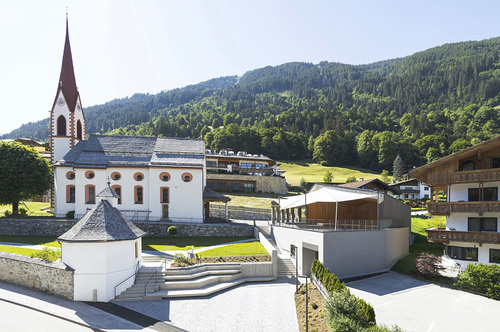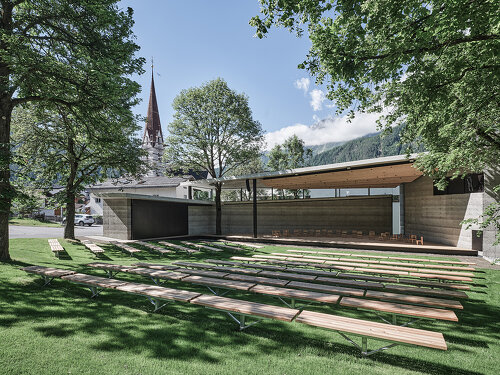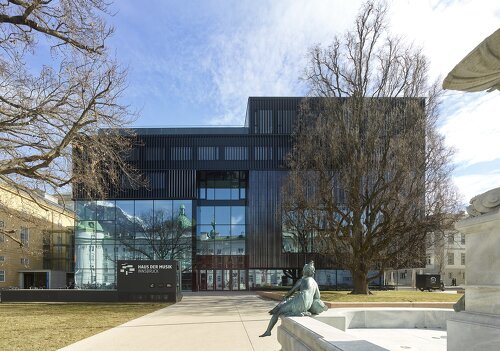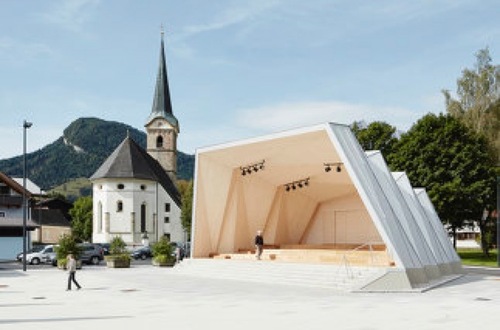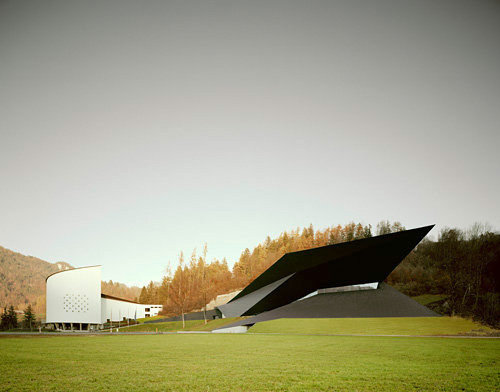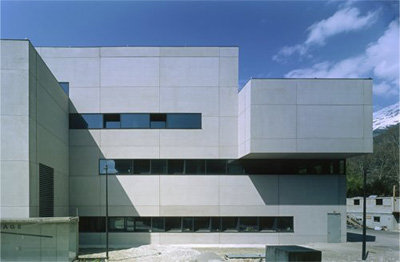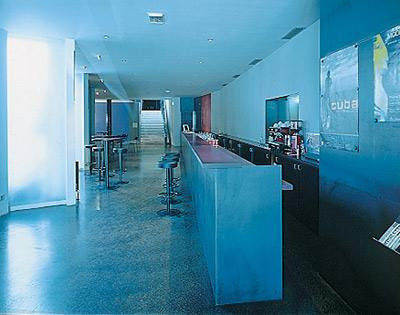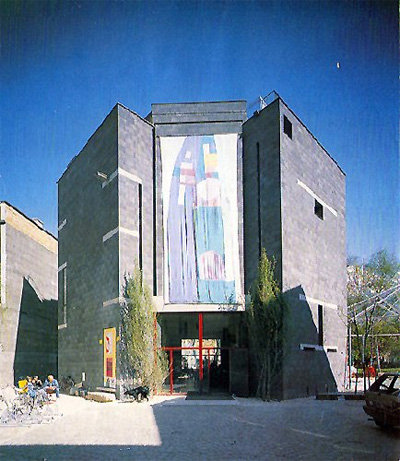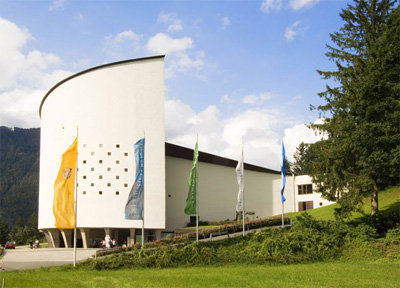Music Pavilion Finkenberg
Architecture: ATP architekten ingenieure (2021-2022) Builder-owner: Gemeinde Finkenberg Open to the public: partially
With the construction of a new music pavilion, including a partially underground rehearsal space, Finkenberg gained a new village center. A stone base and a timber superstructure with folded roofs reference regional building traditions and reinterpret them in a contemporary architectural language. A key element is a new circulation route with an open staircase, which connects the village with the parish church.


